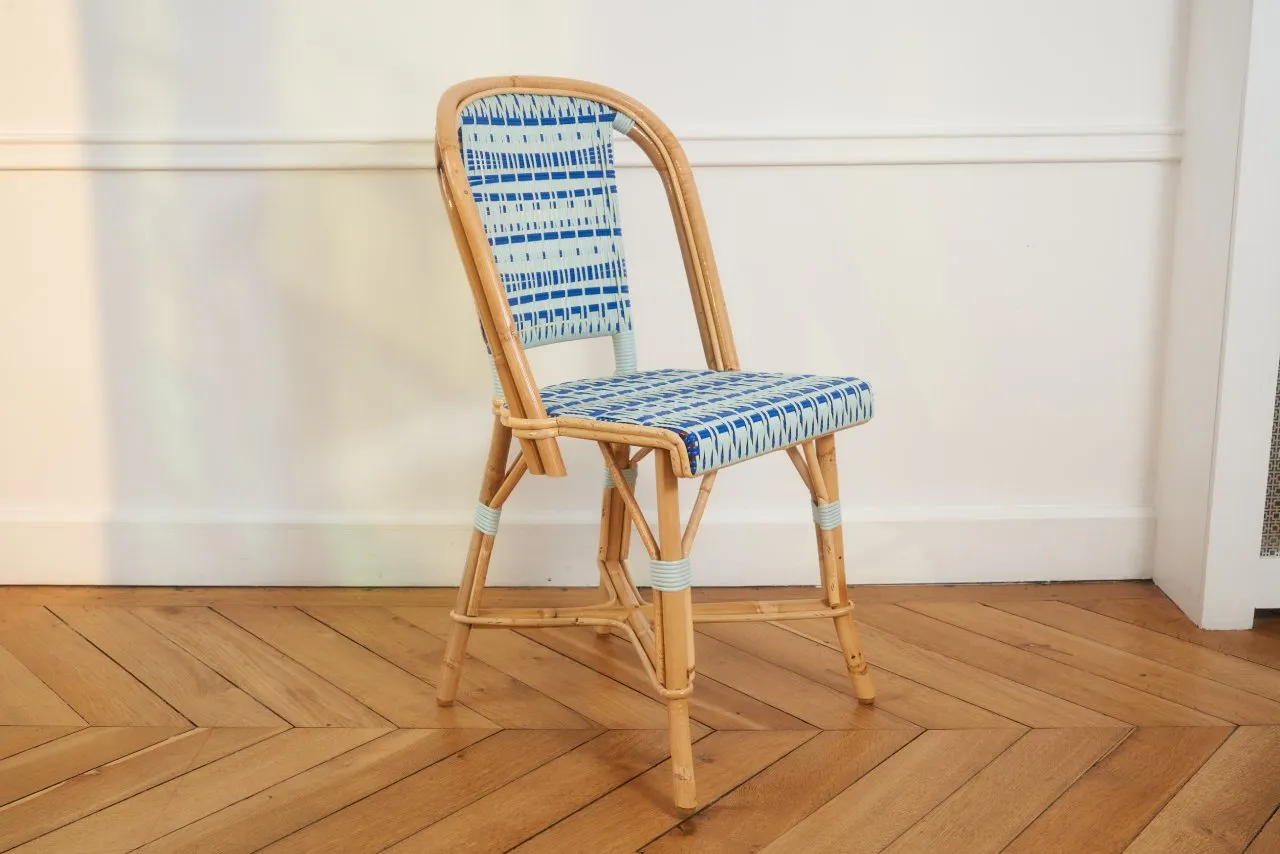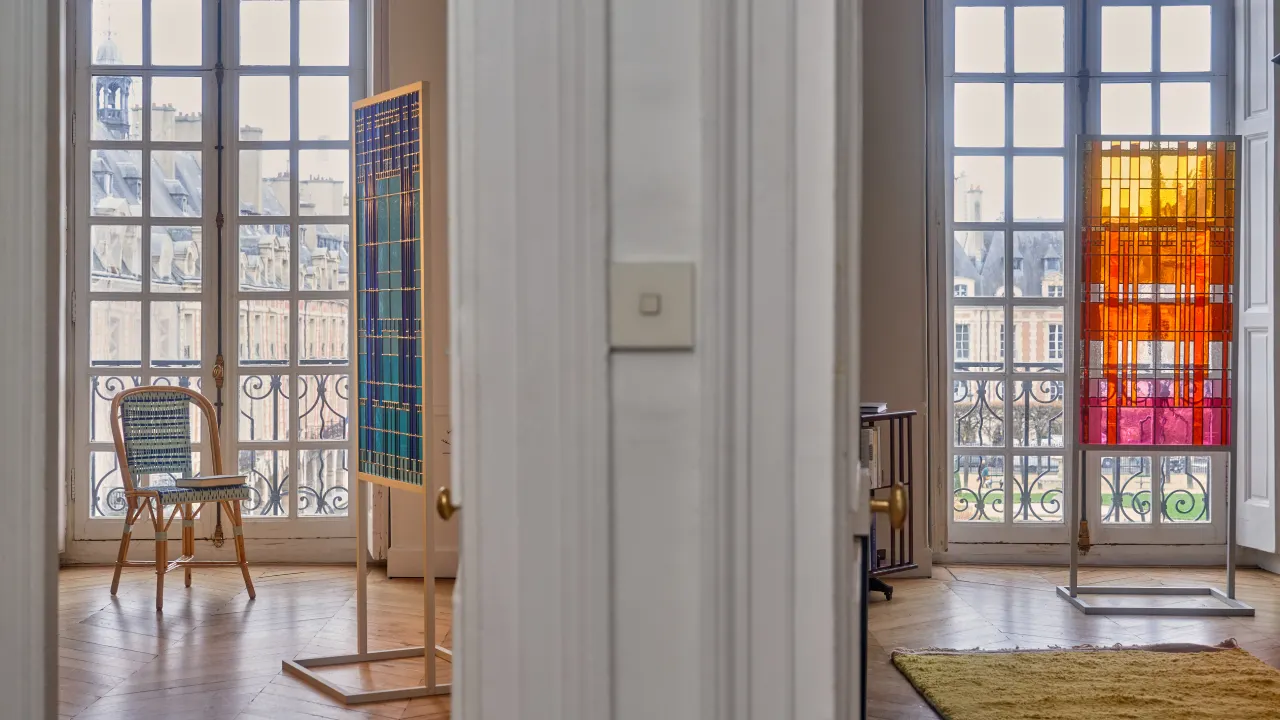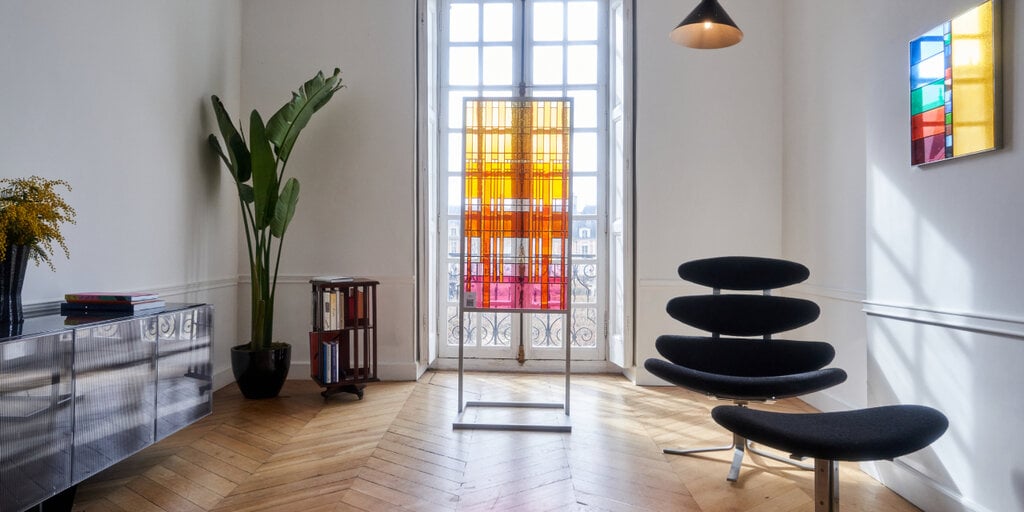Generative AI art is “the contemporary movement of our time,” says Ismail Tazisaoud, founder of design studio TRAME. But while artificial intelligence is a cutting-edge technology, TRAME aims to marry it with the human touch of traditional craftsmanship, Tazisaoud told Decrypt’s SCENE.
The studio’s work was recently on display in Paris, where an apartment in the exclusive Place des Vosges was given over to its “Generative Interiors” concept, showcasing work that brought together traditional crafts with digital design.
“We wanted to put this art in the context of an interior, in order to enable people to see these pieces inside their homes immediately,” said Tazisaoud.
The studio’s “vision for the future of interior design” presented work from its Craft Nouveau collections, including designers Martin Grasser, Jeff Davis, Alexis André, and ArandaLasch in its Gallery Space. All four create designs using generative art tools that are trained to produce outputs tailored to their traditional crafts practices, including cane weaving, stained glass, and physical looms.
“Generative Interiors” by TRAME. Image: TRAME
“With what I call generative craft, we start from the physical,” Tazisaoud said. “We inform the code with the physical constraints of the craft.” That means that from the outset, artists are “expressing themselves physically and digitally,” he added. “They craft a code to be a tapestry, to be a sculpture, to be a mirror.”
By imposing the physical limitations of traditional crafts onto generative AI tools, Tazisaoud explained, “You see each pushing the boundaries of the other.” The designer’s inputs generate millions of unique outputs, which they curate before hand-crafting the design into the finished product.
 Aranda Lasch x Maison L. Drucker. Image: TRAME
Aranda Lasch x Maison L. Drucker. Image: TRAME
“That’s how you see the craftsmanship pushing the artists, pushing generative art into their practice and starting that conversation,” said Tazisaoud. “Once we generate the output, we know that it’s going to work because the algorithm is informed by the physical constraints of the craft, and then we make the physical piece.”
To realize their designs, the artists traveled to centers of craft; Alexis André worked with cane weavers who’ve been plying their trade in the French village of Aubusson for six centuries, while Jeff Davis collaborated with stained glass workshop Atelier Loire, who’ve restored windows in the Notre-Dame and Chartres cathedrals.
 “Generative Interiors” by TRAME. Image: TRAME
“Generative Interiors” by TRAME. Image: TRAME
“Technology and craftsmanship is not a new conversation,” said Tazisaoud. “We’re just continuing it.”
In the future, generative design will make the creation of collections made out of unique pieces “effortless,” he explained. “We’re getting a lot of interest from traditional design maisons d’édition,” Tazisaoud told Decrypt, explaining that generative AI will enable the design houses to produce 1,000 unique chairs for the same cost as it does to produce 1,000 identical ones now.
Although TRAME’s offering is aimed at the niche luxury consumer, Tazisaoud believes that generative art will enable bespoke design to scale to the mass market. “As generative art breaks through, you’re going to see more and more initiatives,” he said. “It wouldn’t surprise me if tomorrow IKEA offers a series of a million unique posters at 20 bucks from the same collection.”
Edited by Andrew Hayward
Stay on top of crypto news, get daily updates in your inbox.
Source: https://decrypt.co/222913/design-studio-trame-creating-generative-craft-with-ai




